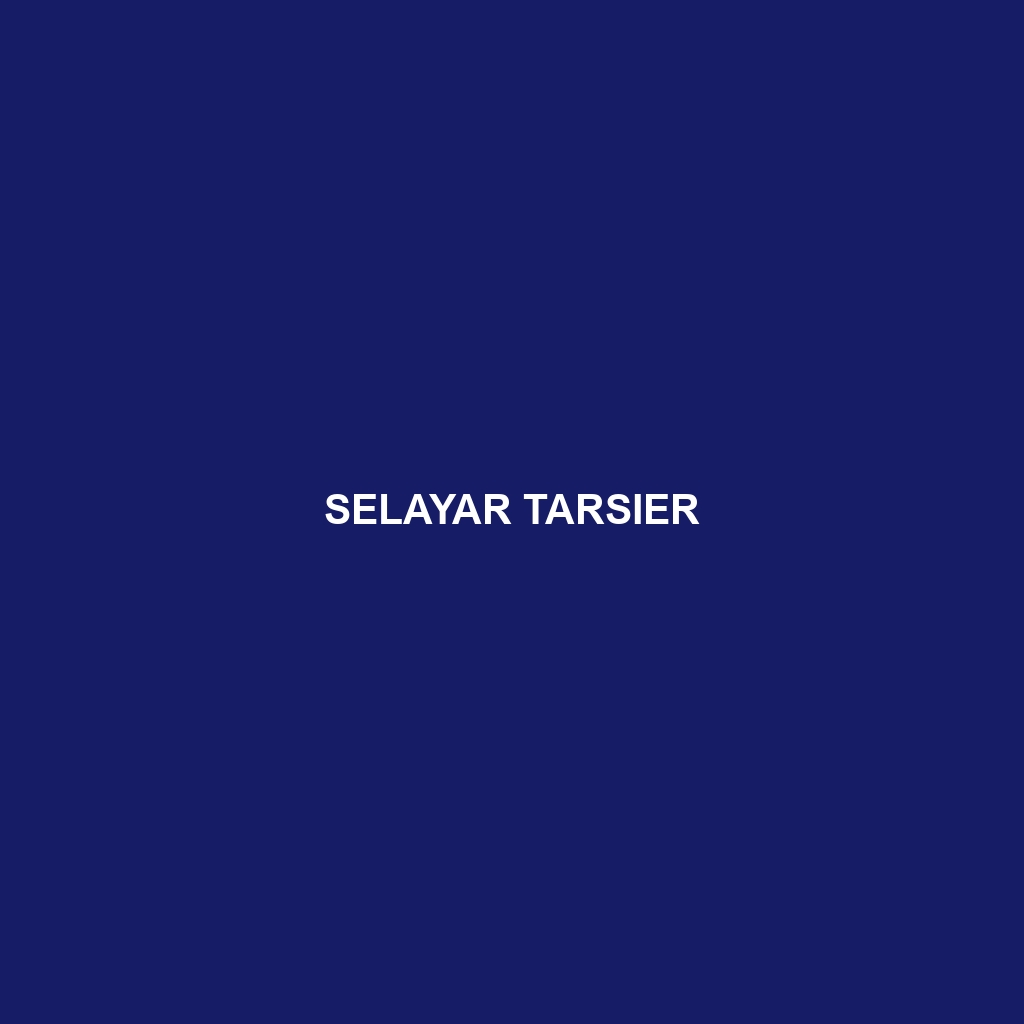Selayar Tarsier
Common Name: Selayar Tarsier
Scientific Name: Tarsius spectrum
Habitat: The Selayar Tarsier is primarily found in the lush forests of the Selayar Islands in Indonesia. These tarsiers thrive in tropical and subtropical environments, favoring dense, humid forests where they can easily navigate through the canopy. They are typically located at elevations ranging from lowland areas to the upper elevations of the islands, where the vegetation provides ample cover and food resources for these small primates.
Physical Characteristics: Selayar Tarsiers are small primates, measuring approximately 4 to 6 inches in length, excluding their long tails which can be up to 10 inches. Their fur is generally a mix of gray to brown, allowing them to blend seamlessly into their forest surroundings. Notable features include large, round eyes that provide exceptional night vision, long fingers for grasping branches, and a distinctively flat face. These characteristics make them not only visually appealing but also perfectly adapted for their nocturnal lifestyle.
Behavior: Selayar Tarsiers are predominantly nocturnal, which means they are most active during the night. They exhibit unique social behaviors, often living in small family groups. These tarsiers are known for their remarkable leaping abilities, propelling themselves from branch to branch as they search for food. Vocal communications, including high-pitched calls, can often be heard during their nighttime activities, which serve various social functions within their group.
Diet: The diet of the Selayar Tarsier primarily consists of insects, such as crickets and grasshoppers, as well as small vertebrates including birds and small mammals. These tarsiers are skilled hunters, utilizing their keen nocturnal eyesight to locate prey in low light conditions. Their feeding habits play a crucial role in controlling insect populations within their habitat, highlighting their importance in the local food web.
Reproduction: Selayar Tarsiers typically have a breeding season that coincides with favorable environmental conditions, often occurring from late summer to early autumn. After a gestation period of about six months, females give birth to a single offspring, which they care for diligently. The young are born with their eyes open and are immediately capable of grasping onto their mother’s fur for safety, showcasing a strong maternal bond.
Conservation Status: The Selayar Tarsier is currently classified as “vulnerable” due to habitat loss and fragmentation stemming from deforestation and agricultural expansion. Conservation efforts are critical in preserving their natural habitat and ensuring the survival of this unique species. Awareness campaigns and habitat restoration are key strategies being implemented to address these threats.
Interesting Facts: One fascinating fact about the Selayar Tarsier is that they can rotate their heads almost 180 degrees, similar to an owl, which enhances their ability to scan for predators and prey without moving their bodies. Their high-pitched calls can be heard from great distances, allowing them to communicate effectively even in dense foliage.
Role in Ecosystem: The Selayar Tarsier plays a vital role in its ecosystem as both a predator and prey. By controlling insect populations, they help maintain the ecological balance, while also serving as prey for larger predators such as snakes and birds of prey. Their presence indicates a healthy forest ecosystem, making their conservation critical for biodiversity in the Selayar Islands.
